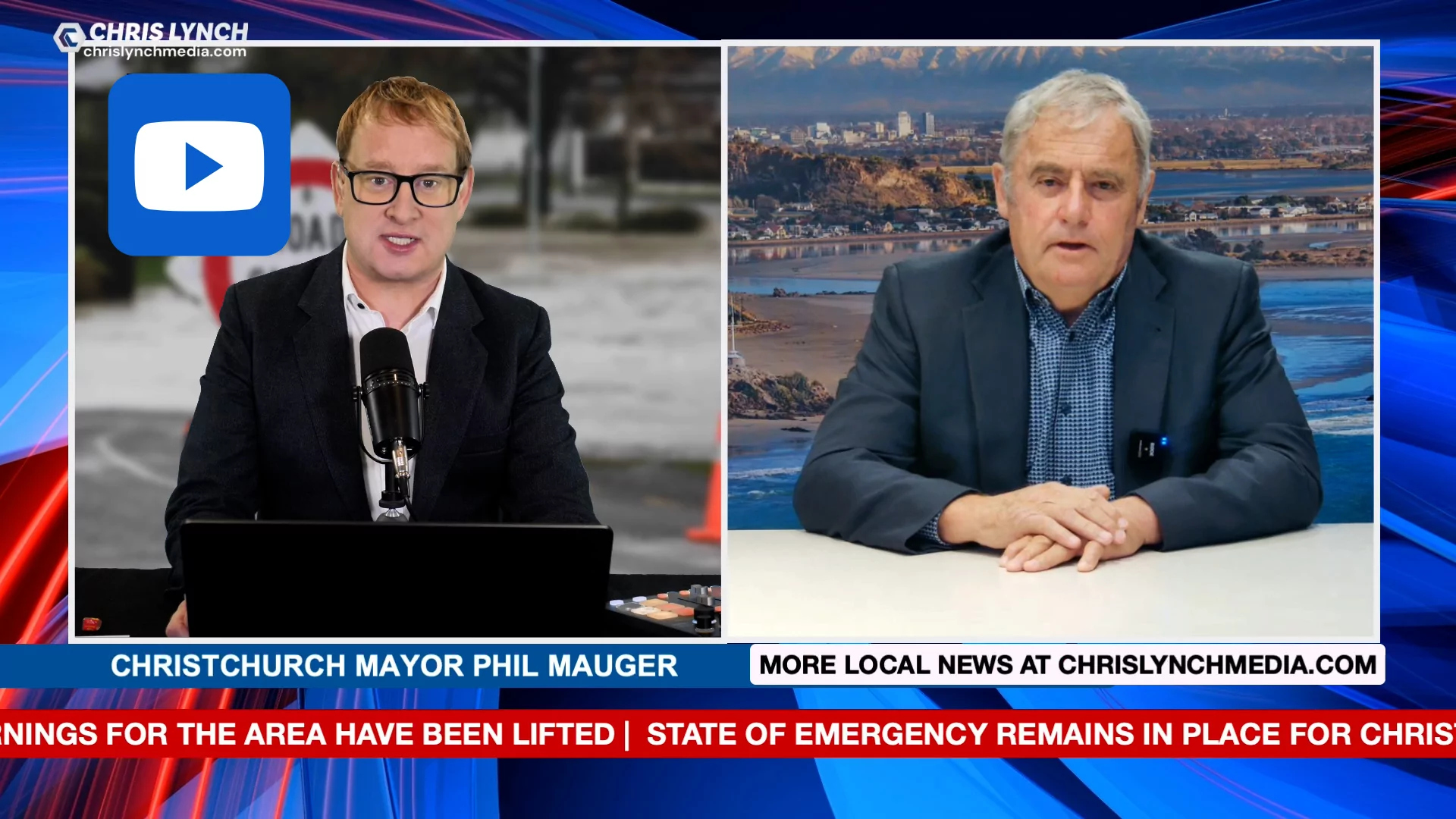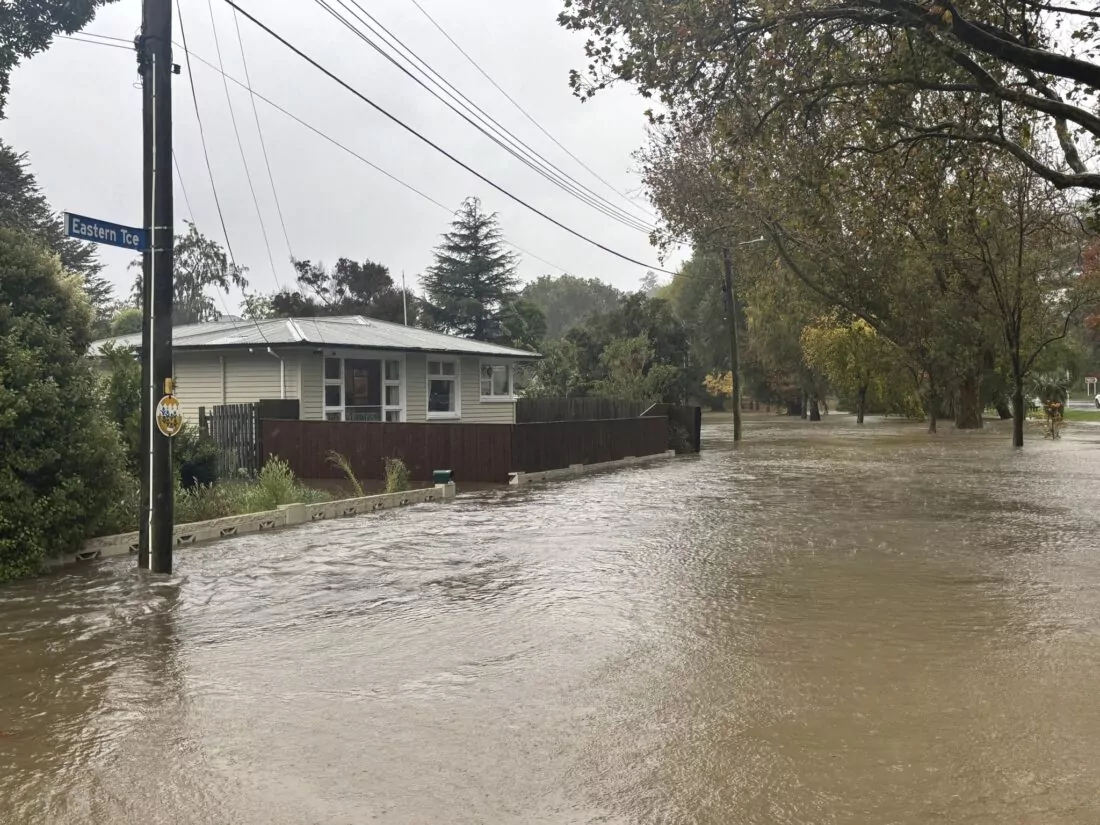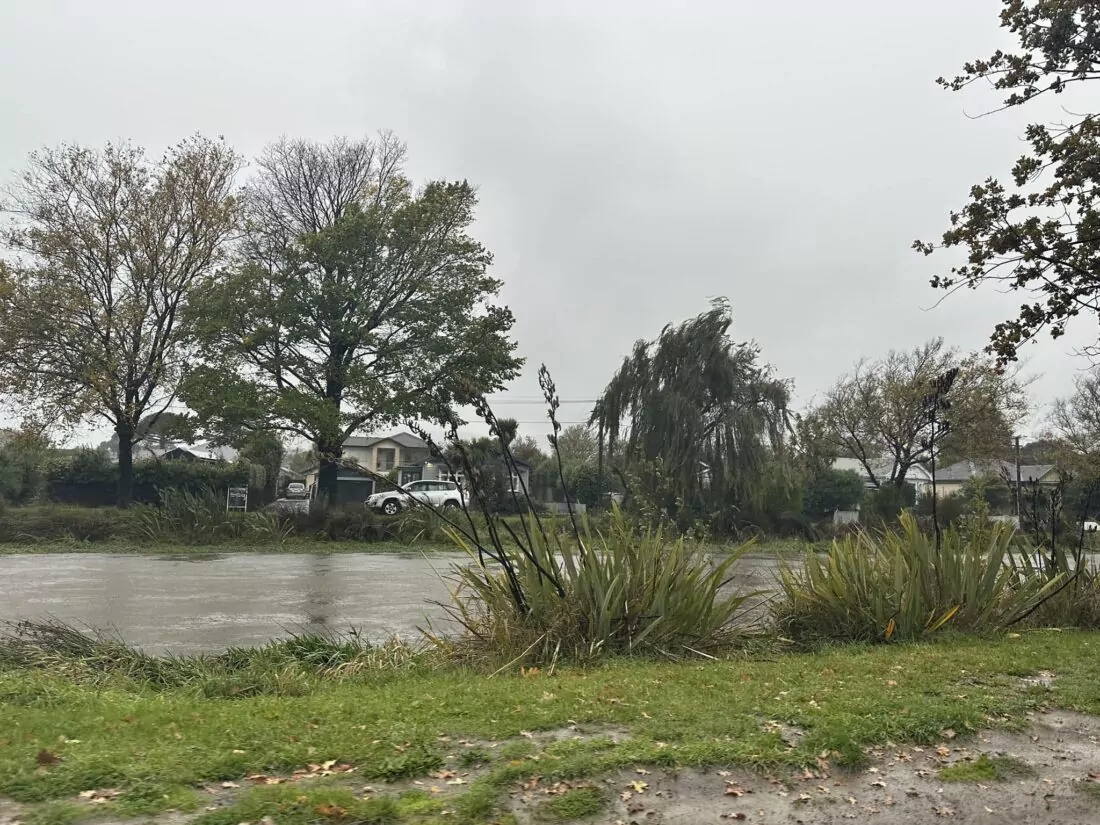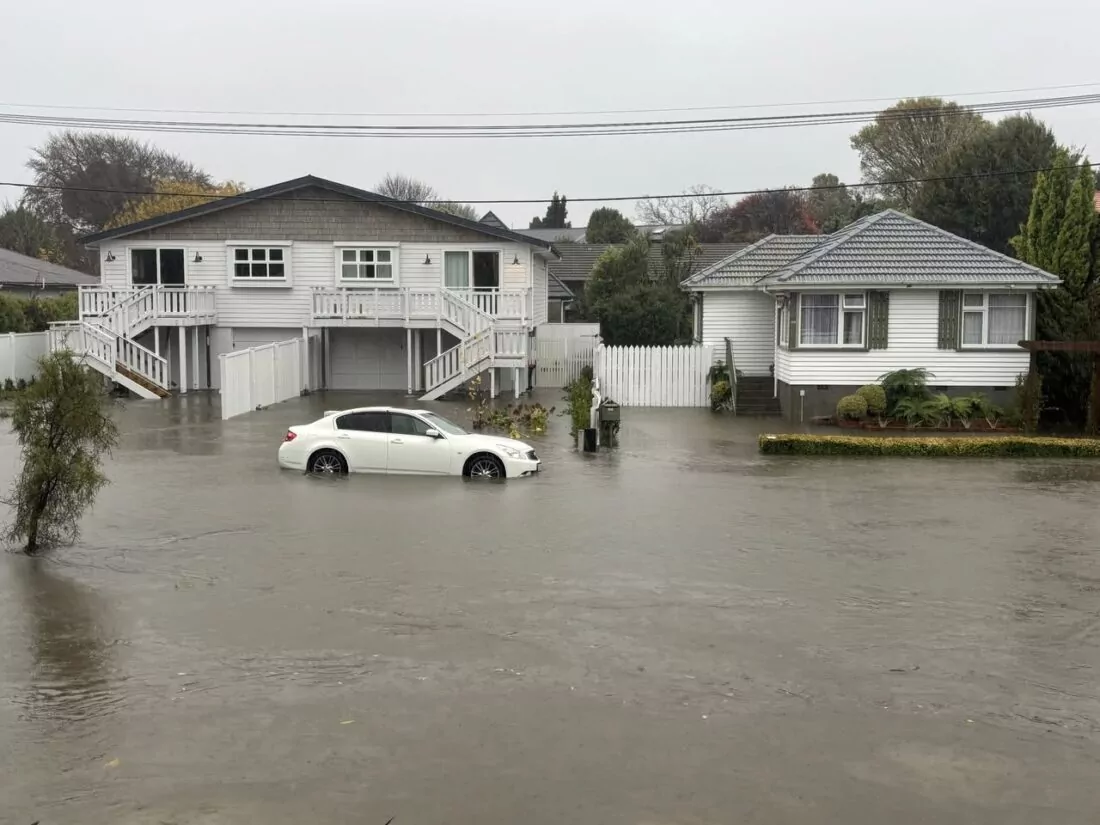Escaped youth tracked by Eagle helicopter, found hiding in New Brighton
The young person who escaped from a youth justice facility in Rolleston has been located...

Emergency crews are continuing aerial and ground assessments across Christchurch and Banks Peninsula today, as both areas remain under a local state of emergency following weather that delivered record rainfall, slips, and extensive damage to roads and infrastructure.
Christchurch Mayor Phil Mauger told chrislynchmedia.com that the overnight break in weather was a relief — especially for the city’s strained stormwater network.
“Thank goodness it stopped raining,” he said. “It was a fairly quiet night, but those retention basins in Halswell didn’t need another drop of water. They were chocka.”

Flooding in Christchurch on Thursday (Source Christchurch City Council)
Mauger said the basins will be gradually released as the level of the Heathcote River drops. “Once the river gets down below a certain level, we’ll start releasing the basins so they empty out and we’ve got storage again in case we get another event.”
Banks Peninsula MP Vanessa Weenink said ” State Highway 75 is now OPEN from Birdlings Flat to Tai Tapu. However, even though the rivers and floodwaters are starting to recede in places, please don’t drive on the closed roads. I am seeing reports of people not obeying the road closures. Please respect the cordons and road closures. Flooding can be deceiving and may be deeper than it appears. Parts will also contain debris, and the condition of the road may be affected.”

Photo: Vanessa Weenink MP for Banks Peninsula
Geotechnical experts and Urban Search and Rescue teams are on-site on Lighthouse Road in Akaroa, where a major land crack has raised serious safety concerns.
“We’re worried about land movement on Lighthouse Road, just above Akaroa township,” Mauger said. “There’s a crack on the road that’s now probably at least 100 metres long and about 50 millimetres wide. It’s not a matter of if — it’s when. So we’re monitoring that very closely.”
A helicopter is being used this morning to transport geotechnical specialists to assess slips and damage in hard-to-reach areas.
Mauger said Banks Peninsula and the Halswell area received “a lot more rain” than central Christchurch, which helped explain the greater level of disruption in those areas.
The Mayor said the state of emergency in Christchurch may be lifted before Banks Peninsula, but only once road access improves and water levels recede.
“As the river level drops, roads will start to reopen. I haven’t been out this morning to have a proper look yet, but I’ll be going for a wee drive shortly,” Mauger said. “As soon as we can, we’ll lift the state of emergency in Christchurch — but I can almost guarantee Banks Peninsula will take a bit longer.”
He defended the timing of the state of emergency declaration on Wednesday, saying the weather outlook had initially seemed manageable.

Flooding in Christchurch on Thursday (Source Christchurch City Council)
“We thought we might escape it around lunchtime. But the rain didn’t ease, and the last thing I wanted to do was declare a state of emergency in the middle of the night,” Mauger said.
He pointed to flooding at Hunter Terrace, where water reached about 300mm deep on the road, saying the state of emergency was about being proactive. “If someone had a medical emergency at 2am and needed to get out, the state of emergency gives everyone the extra power and flexibility they need to respond quickly.”
Three homes in Akaroa were evacuated overnight as a precaution due to the risk of slips. Mauger said assessments are ongoing and more information is expected throughout the day.
Road closures and infrastructure damage
While many roads in Christchurch’s central and northern suburbs have reopened, some key routes remain closed:
Avonside Drive from Wainoni Road to Kerrs Road
Empire Road from Main North Road
Waka Kotahi NZ Transport Agency said slips, potholes, and dropouts are widespread across Canterbury’s highways, warning of delays as clean-up and repair efforts continue.
NZTA Central South Island system manager Mark Pinner said conditions remain hazardous, particularly near tree-lined roads where saturated ground has increased the risk of falling trees.
Motorists are being urged to reduce speed, avoid creating bow waves, and be cautious around road crews, especially at night.
MetService figures show just how intense the storm was:
Christchurch recorded 80.2mm on 30 April — its wettest April day since records began in 1943
Ashburton recorded 105.4mm on the same day — its wettest in nearly two decades
Banks Peninsula saw localised totals of up to 300mm
Wellington recorded winds up to 118km/h at the airport, the strongest southerly gust since 2013
Offshore waves reached 12 metres at Baring Head
Weekend weather: a break in sight
After days of relentless rain, conditions are expected to gradually improve.
MetService is forecasting easing showers and cooler temperatures across Canterbury today, with dry spells and sunnier periods expected over the weekend. Some light rain may return to the Canterbury foothills and Banks Peninsula late Saturday into Sunday.
Authorities continue to urge caution on saturated hillsides and roads as the risk of slips and tree falls remains high.
Weenink said the rain had eased overnight, but many roads remained shut due to floodwaters, debris, and damage.
“Contractors and emergency services are out this morning assessing roads to make sure they’re safe to be reopened. There’ll be a bit of debris and damage—and I’m sure there are some new potholes,” she said.
Emergency services responded to a landslip risk on Lighthouse Road near Akaroa on Wednesday evening, where three homes were evacuated as a precaution.
“There was a potential for a slip and a crack in the road, above the Caldera Estate Vineyard. A geotechnical assessment will now determine whether it’s safe,” she said.
“One farmer is reportedly dealing with around 100 slips just on a single property,” she said.
She urged residents to stay home unless travel is essential.
“My main message to the good people of Banks Peninsula is: take care and only travel if you really need to.”
Weenink thanked emergency responders and volunteers for their efforts during the weather event.
“I just want to say thank you so much to all the volunteer firefighters, emergency services, and to the Westpac Rescue Helicopter crew who flew into Akaroa in really tough conditions. Thank you for your bravery and for looking after people.”
She also praised the Little River Volunteer Fire Brigade for their work during what she described as a very tough day.
“They certainly had their work cut out for them. You might have seen some of the footage—the Little River really turned into a big river.”
Weenink said she was thinking of everyone affected, especially in places like Little River, and hoped residents were coping.
“The good news is, the worst of the weather has now passed.”


